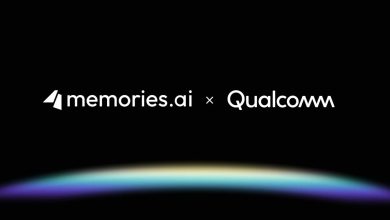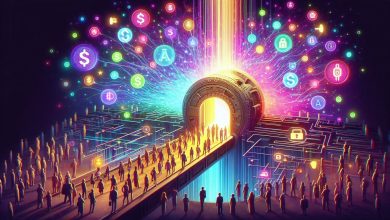
Over the years, brands have used many creative ways to relate to their audiences, and storytelling is one of their most powerful ways. Storytelling has changed over the years to incorporate not only static ads, but interactive and AI driven experiences.
Generative AI is changing the way stories are told and shared, from visual campaign creation to acting as a slogan generator for compelling brand messaging. It is certainly changing the landscape.
It is allowing brands to create, share, and personalize content in a manner like never before in history: quicker and easier than any other approach. This article will focus on how this tool works, the significance of its use, and what this means for modern businesses.
Why is Generative AI Important to Brand Storytelling?
Generative AI fits within a broader category of AI, referred to as artificial intelligence that generates new things, as opposed to analyzing existing things, which is what traditional AI does. Generative AI can create anything from text to images to videos to music to voices.
ChatGPT, DALL·E, Midjourney, and Runway are some examples of popular tools for generative AI. These tools allow marketers and creatives to quickly generate content around their ideas within minutes.
For many years, storytelling has been about emotion, imagination, and connection – and generative AI allows brands to connect those dots more personally, and at the same time much faster while augmenting the creative process.
Examples:
- A travel brand can generate versions of stories about specific destinations aimed at solo travelers, couples, and families.
- A fashion brand can use AI-generated visuals to demonstrate outfits or styles that match each customer’s specific coloring or individual style.
Real-World Examples of AI Storytelling
If you notice carefully, many popular brands are already using AI to improve storytelling in branding. Here are some real-life examples:
1. Coca-Cola’s “Create Real Magic” Experience
Coca-Cola encouraged fans to use AI tools, like DALL·E and ChatGPT, to create digital artwork based on its products. The best entries were displayed on real billboards across the world.
Result: It provided a storytelling opportunity that involved your customer as part of the creative process, not merely a receiver of the product.
2. Nike’s Personalized Product Stories
Nike leverages AI to tell a story that is different for each shopper in a personalized way. For example, the AI will feature shoes that will help the shopper with their specific goal of running faster or consider environmental considerations.
Result: Customers feel acknowledged and connected to the Nike brand at an individual level.
3. L’Oréal: AI-Beauty Advisor
L’Oréal developed a virtual beauty assistant to recommend skin and makeup products to users through AI. The idea is that the AI recommends products while telling personalized stories around the recommendations based on a user’s photo and needs.
Result: The storytelling feels personal, authentic, and helpful rather than a promotional opportunity.
4. Netflix: AI Content Suggestions
Netflix leverages AI to personalize what you watch based on your viewing habits, and not simply what Netflix is programming. The AI creates short descriptions and thumbnails based on your viewing habits.
Result: It shows that Netflix really understands its customers’ preferences to keep people engaged.
Advantages of Generative AI in Brand Storytelling
Using Generative AI in storytelling isn’t only about production efficiency. There’s more to it. Read about it below:
1. Customization on a Large Scale
Almost instantaneously, AI can customize stories for many different people. For example, a coffee brand may want to deliver a more eco-friendly story to customers who care about sustainability, and a more work-focused productivity story to customers who have professional backgrounds.
2. Speed and Efficiency
The fact is, marketers are now able to brainstorm, script, and design campaigns in hours, rather than weeks. As a result, marketers can be more relevant and quicker at responding to leading-edge trends.
3. Creative Experimentation
AI empowers teams to conceptualize and engineer various iterations to discover what works best. In lieu of making untested assumptions about what the audience will like and dislike, marketers can actually test several tones, visuals, and stories in an instant.
4. Data-Driven Insights
AI doesn’t simply create content; it learns from actual audience reactions. It develops real insight for brands to determine the type of stories that resonate best with audiences.
5. Visual Storytelling
AI-generated visual content will allow a one-person or small business to create eye-catchingly images and videos without large production costs. Small fashion startups are already using Midjourney to design elegantly styled campaign visuals before executing a real photo shoot.
Generative AI in Brand Storytelling
While AI has its exciting opportunities, there are pitfalls for brands to understand. Here they are:
1. Authenticity Pitfalls
Using AI too much results in content that feels robotic or experience generic in style. For that reason, always precede the AI materials with human creativity, empathy, and storytelling experience.
2. Ethical and Legal Viability
AI may create copy that already exists without realizing it, as well as deepfake types of content.
So, use trusted tools, and when using AI to create, inform the audience before you release the content.
3. Creative Relapse
Using AI is likely to weaken the brand’s voice or uniqueness. AI should be a tool or aide to creative work, not the entire source of creative ideas.
4. Bias & Representation
Because all of the AI is learning from data that already exists, there is inherent societal or cultural bias that is learned through the data. To avoid bias, make sure to publish your content after a thorough human review.
Impact of AI Storytelling on Engagement and Conversion
Storytelling with AI is shifting the way audiences and brands engage with one another by offering more personalized and relevant emotional storytelling. Here are some impacts of AI storytelling on engagement and conversion:
Making Smarter Creative Decisions
Artificial Intelligence (AI) is about more than just efficiency – it is also about having some foresight. Brands can leverage data and insights to guide their creative decisions. AI can learn about a customer’s wants and needs, and predict which type of story or message is likely to resonate with the audience.
Data-Driven Story Development
AI-enabled technologies can also conduct rapid tests to identify which version of the same idea is performing better. For example:
AI can evaluate a set of headlines and identify which headline achieves the most clickthroughs.
AI can assess how long a viewer watched a video and then recommend changes to video pacing, imagery, and tone to advance and retain viewer interest.
Driving Engagement and Conversions
Brands deploying stories informed by AI are already seeing shifts in engagement with customer content and sales metrics. Adobe notes personalized content can increase conversion rates by as much as 80%, and AI makes it possible to do that with regularity.
Creating Meaningful Experiences
AI can also help brands create more immersive and impactful experiences. Chatbots, augmented reality (AR) filters, and virtual brand assistants engage customers to experience and interact with a story, rather than just reading or watching it.
How AI Brand Storytelling Shapes Business Results
AI-driven storytelling is indeed a vehicle for business growth. The organizations with the most successful outcomes combine the use of human imagination and AI computing power. While AI will assist in writing, design, and analysis, it is the human who provides emotion, empathy, and authenticity of the story to begin with.
- For startup brands, AI accesses professional-quality content and levels the playing field.
- For larger brands, it creates efficiencies and normalizes brand decency in their multi-channel campaigns.
- For the consumer, AI encourages a human and relatable brand experience.
Closing Thoughts
The landscape of brand storytelling is evolving with generative AI. Marketers can now think fast, create smart, and connect deeply with their communities.
That said, where AI may write or design, it will never feel, and this is why human creativity will always be at the center of brand storytelling.
The future of branding will be built by those who bring these two worlds together – the innovation in AI, and the warmth that comes with human imagination – to contribute to the creation of reintroduced stories that inspire, engage, and ultimately connect.




